Optimum Workholding Increases Output
This investment casting company doubled production of a series of parts by incorporating workholding into a cell that keeps pallets constantly moving across the machine tool.
Share




When Aero Metals bought a powerful new vertical machining center, it had more than the machine’s capabilities in mind. An adherent of the principles of lean manufacturing and continuous improvement, the investment casting company saw the purchase as an opportunity to create a machining cell that would perfectly suit its needs for producing a growing series of parts, and to do so more quickly, efficiently and ergonomically than what it had achieved to date. What it didn’t expect—but had certainly hoped for—was to see an increase in the machine’s uptime from somewhere around 40 percent on a good day to as much as 80 percent on average.
How was this achieved? By harnessing internal engineering resources with external workholding technology companies to create a cell that would allow for the fixturing of parts on quick-change pallets outside of the machine while it was busy cutting parts on other pallets. These repeatable, self-seating pallets placed the workpiece in the same location every time it was mounted, reducing setup times from hours to minutes. A specially designed trunnion table provides a fourth axis for additional machining agility and the ability to load multiple pallets at a time.
“One thing that sets us apart from other investment casting companies is that we make our own molds, mix our own metals, pour our own castings and then handle everything from machining to assembly,” says Ryan Hart, process engineer. “This workholding system has increased uptime and slashed setup times, allowing us to change jobs quickly and be more responsive to our customers’ needs.”
Workholding Challenges
Founded in 1961 and based in La Porte, Indiana, Aero Metals Inc., creates molds through investment casting, dipping wax forms, or patterns, repeatedly into zircon sands mixed with a silica slurry. Once dried, the wax is melted from within the forms, and molten metals are then poured into the resulting molds. These molds are cracked away after cooling to reveal castings of a variety of parts, from boat propellers to firearm components.
The series of parts for which Aero Metals’ machining cell was designed are electrical conduit bodies of various geometries made of 316 stainless steel. Some 200 different part numbers are run through the cell. The process performed at this machining station mostly involves thread milling—with maybe a dozen thread-milling tools in the magazine—and some tapping and drilling, generally using standard tooling.
The company traditionally had made these parts on an older VMC, but as that machine was losing its ability to hold tight tolerances, the decision was made to invest in a new Doosan DNM 500 II VMC. Still, the central problem with setups remained: Far too much time was required to mount a single workpiece within the machine. The logical first step toward streamlining the process involved developing a more efficient approach to workholding.
Workholding Solutions
After researching different types of workholding devices and systems available on the market, the company determined that the SCHUNK (Morrisville, North Carolina) Vero-S NSE plus 138 quick-change pallet system would be ideal for this application, with lightweight fixturing machined in house.
The goal of this solution was twofold. First, the quick setup minimized machine downtime, reducing it from between two to four hours to only a few minutes. The Schunk system consists of a clamping station to receive a pallet that offers positioning repeatability to 0.0002 inch. The company generally has two parts on the machine while two more pallets are being prepared outside of the machine. The switch out literally takes less than a minute. Once the two parts are machined, two new workpieces that have already been attached to pallets are loaded. Even this stage has been carefully examined, as the company sought ways to make the whole assembly as light as possible for ease of handling. For instance, the loaded pallets weighed in at 8 pounds in the beginning, but Mr. Hart found that the Doosan’s rigidity allowed him to remove material more aggressively and trim a preloaded pallet down to 6 pounds. In addition, the shop designed a worktable next to the VMC that is long enough to hold four pallets. The table’s surface is slightly tilted toward the operator’s position so he does not strain his back having to twist around to load and unload the parts, and a tooling fixturing cabinet was installed so that all the necessary tools are within easy reach.
The second goal Aero Metals wanted to achieve with this workholding solution would be accomplished by commissioning a custom trunnion table that would allow for easy loading/unloading of pallets and for multiple parts to be machined at once. Basically, a trunnion table resembles a cradle, or a long cylinder with one flat side, which rotates along its longitudinal axis. When workpieces are mounted, the table rotates to provide additional fourth-axis machining angles. Mr. Hart sat down with Stan Martin, owner of Trunnion Table, a division of Martin Manufacturing Services Inc. that is based in Elsemere, Kentucky, and Lester Adair, his sales representative at Schunk, to describe what he wanted.
Based on a few initial conversations, and with the involvement of Mr. Adair, Mr. Martin was able to design the table to Mr. Hart’s exact specifications, making sure that it would be easy for the group at Aero Metals to handle the installation by outfitting the table to mate with off-the-shelf Schunk workholding devices. According to Mr. Hart, the group had the new cell up and running the day it arrived. “Stan was really great to work with,” he says, “and Lester as well. They both know their jobs so well that all I had to do was describe what I wanted, and they were off and running. Stan also provided us with everything we would need, from the software to the wiring, to get everything connected quickly. It was really a perfect installation.”
Workholding Benefits
So what has changed for Aero Metals since the new cell was assembled? Plenty, according to Mr. Hart, including:
- In addition to drastically increased spindle uptime, repeatability and accuracy have also been greatly improved, and the ability to change setups on the fly—quickly changing fixturing to handle last-minute rush jobs—has allowed the company to be more agile and responsive to its customers.
- The added productivity has also reduced the costs of running the cell, both in terms of the power required and the operators needed to oversee the system. Mr. Hart points out that the VMC once ran full-time during all three work shifts, but the added capacity now allows the Doosan to meet demand during two shifts.
- The trunnion does not need to be removed for machining parts that are larger than the electrical enclosure. The table handles as many as four pallets at a time from the same series of parts, although only two are usually loaded due to the increased speed that comes with being able to load two new pallets while two are being machined.
- The DNM 500 II’s FANUC control also simplified the transition to the new machine, as all of the other VMCs in Aero Metal’s machine shop are equipped with the same control. Since the majority of those machines are fourth-axis machines, all that was required for the new VMC was some additional M code to open up the clamping receivers.
- The new cell configuration puts a higher priority on ergonomics than the previous system, making the machining area easy to navigate and putting less physical stress on the operator. This also means more parts can be run across the cell each day.
- The new machining cell has allowed Aero Metals to pursue—and land—contracts it wasn’t able to bid competitively before, such as certain parts for firearms. The high degree of accuracy of the VMC and ease of setups and change-outs enabled by the fixturing system will allow it to pursue making new parts or even enter new markets, Mr. Hart says. The new technology has also prompted the company to begin looking for greater efficiencies in other areas of the shop.
Working toward the Future
Having this new technology on the shop floor awakened the company to its potential benefits in other areas. Impressed by the design of the Schunk hydraulic toolholders, it benchmarked them against both shrink-fit and press-fit systems. “We felt that they outperformed everything else we tried,” Mr. Hart says. “In fact, it improved our tooling life by four or five times, so we immediately switched over to those on all our machines.
“This VMC and workholding system work so well that we’re planning to have a duplicate cell installed in the near future, and we’re also going to have an older machine rebuilt and put back into service.”
In addition to increased productivity for the shop, the machining cell provides benefits for its customers as well. For instance, whenever it is able to realize significant cost-per-part savings, Mr. Hart says Aero Metals basically splits those savings down the middle with its customers. This approach isn’t just about being fair or deepening relationships; it also makes customers more likely to allow new processes and technologies to be utilized in making their parts, which saves money for everyone involved, he says.
The company also uses the cell to attract students to careers in manufacturing. With approximately 300 employees, Aero Metals is one of the largest corporate employers in La Porte, and it is heavily involved with outreach to local technical schools, community colleges and high schools. The company will host tours to give students a glimpse of what modern machining actually looks like, and operators and engineers will also attend local job fairs and classrooms to give students an idea of what it would take to achieve a career in manufacturing, and what it delivers.
“We’ll go in and say, ‘This is what an engineer does, this is how we do it here at Aero Metals, and this is what you need to do in order to prepare yourself,’” Mr. Hart says. “We offer paid summer internships in addition to that.
“Once these students see this machining cell, it changes the whole way they think about manufacturing. And that type of firsthand exposure is one of the more powerful ways to help overcome the skills gap and ensure that we have qualified engineers and machine operators and programmers in the future.”
Related Content
Rail Manufacturer Moves Full Steam Ahead with Safe, Efficient Workholding Solution
All World Machinery Supply paired a hydraulic power unit with remote operating capabilities in a custom workholding system for Ahaus Tool & Engineering.
Read MoreLean Approach to Automated Machine Tending Delivers Quicker Paths to Success
Almost any shop can automate at least some of its production, even in low-volume, high-mix applications. The key to getting started is finding the simplest solutions that fit your requirements. It helps to work with an automation partner that understands your needs.
Read MoreCustom Workholding Shaves Days From Medical Part Setup Times
Custom workholding enabled Resolve Surgical Technologies to place all sizes of one trauma part onto a single machine — and cut days from the setup times.
Read MoreWorkholding Fixtures Save Over 4,500 Hours of Labor Annually
All World Machinery Supply designs each fixture to minimize the number of operations, resulting in reduced handling and idle spindle time.
Read MoreRead Next
Setting Up the Building Blocks for a Digital Factory
Woodward Inc. spent over a year developing an API to connect machines to its digital factory. Caron Engineering’s MiConnect has cut most of this process while also granting the shop greater access to machine information.
Read More5 Rules of Thumb for Buying CNC Machine Tools
Use these tips to carefully plan your machine tool purchases and to avoid regretting your decision later.
Read MoreBuilding Out a Foundation for Student Machinists
Autodesk and Haas have teamed up to produce an introductory course for students that covers the basics of CAD, CAM and CNC while providing them with a portfolio part.
Read More
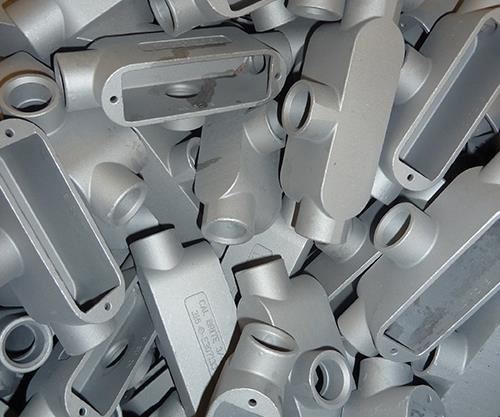
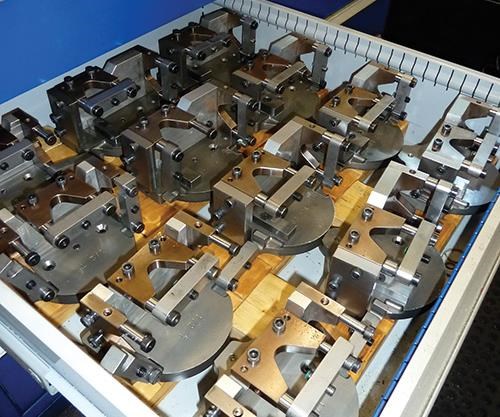
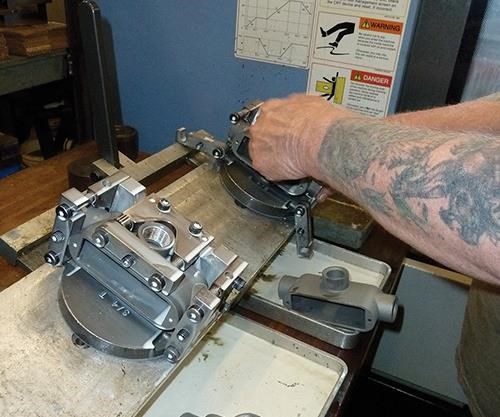
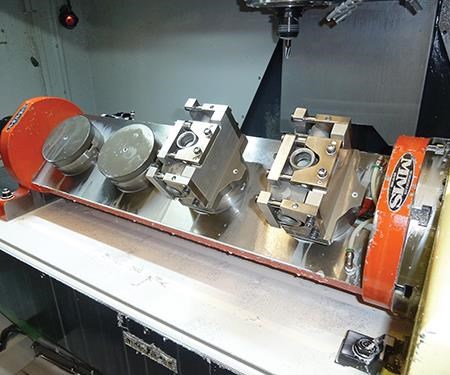
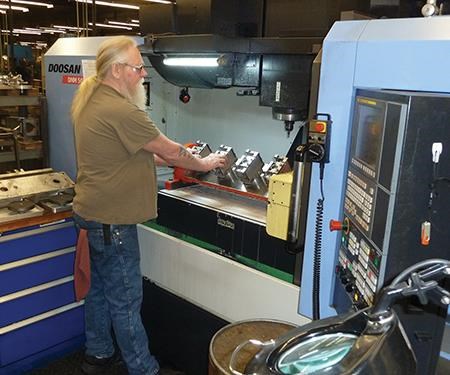
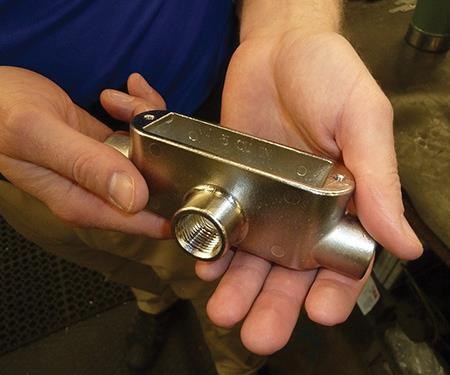
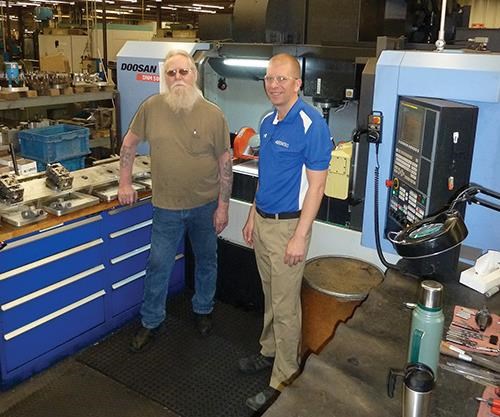




















.jpg;maxWidth=300;quality=90)









